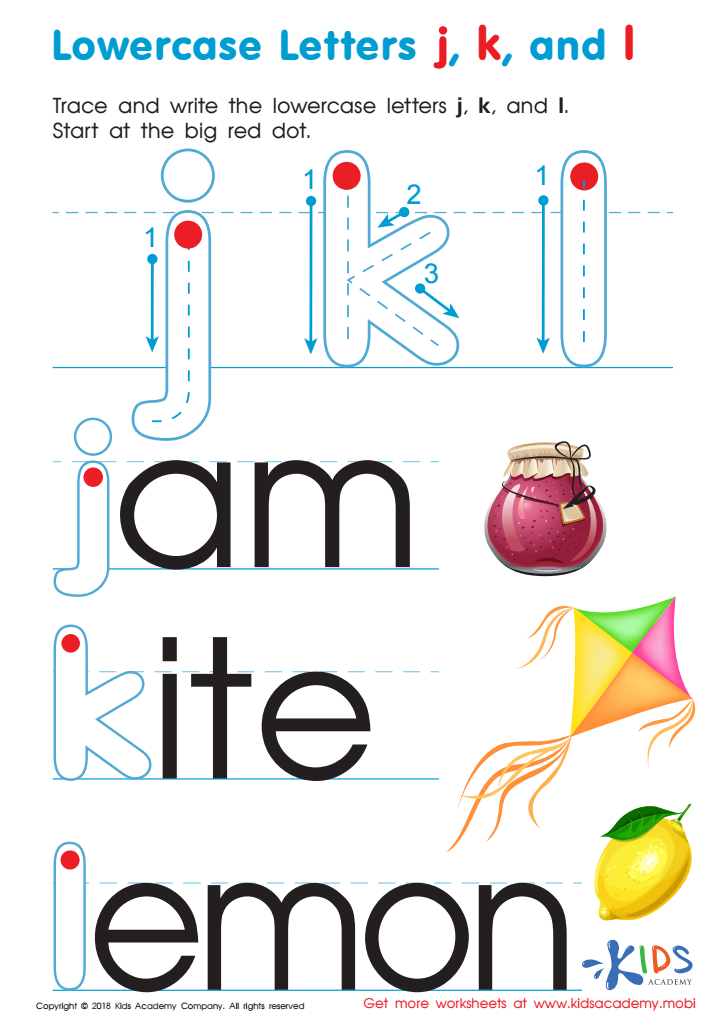Lowercase letter writing Normal Lowercase/Small Letters Worksheets for Ages 6-9
3 filtered results
-
From - To
Discover our engaging Lowercase Letter Writing Worksheets, designed specifically for children aged 6-9. These resources focus on developing essential writing skills through fun and interactive activities. Our worksheets guide young learners in mastering normal lowercase letters, enhancing their handwriting while promoting confidence. Each worksheet is crafted to captivate kids' attention, making the learning process enjoyable. With clear instructions and colorful illustrations, children will practice letter formation, improve their fine motor skills, and reinforce their understanding of the alphabet. Foster a love for writing in your child and watch them flourish with our engaging lowercase letter worksheets today!


Lowercase Letters y z Worksheet


Lowercase Letters j k l Worksheet


Lowercase Letters m n o Worksheet
Parents and teachers should care about lowercase letter writing for children aged 6-9 because it is foundational for literacy development. Mastering lowercase letters is crucial for effective communication, helping students form words, sentences, and eventually entire texts. As they progress in their reading and writing skills, knowing how to write lowercase letters correctly allows for smoother transitions into cursive writing and more advanced writing styles later on.
Moreover, lowercase letters are predominantly used in everyday writing. Most reading materials, from storybooks to classroom resources, primarily feature lowercase letters, making familiarity essential for young readers. Encouraging proper letter formation helps develop fine motor skills and hand-eye coordination, which are vital for many other tasks beyond writing.
In addition, engagement in writing activities fosters creativity and self-expression, giving children a sense of ownership over their work. Parents and teachers can further cultivate a supportive environment by incorporating fun and engaging writing practices, such as tracing, games, and storytelling. Recognizing the importance of lowercase letter writing ensures that children build a strong foundation for their literacy journey, setting them up for success in school and beyond. Proper focus on writing at this age contributes positively to their overall cognitive and emotional development.
 Assign to My Students
Assign to My Students















